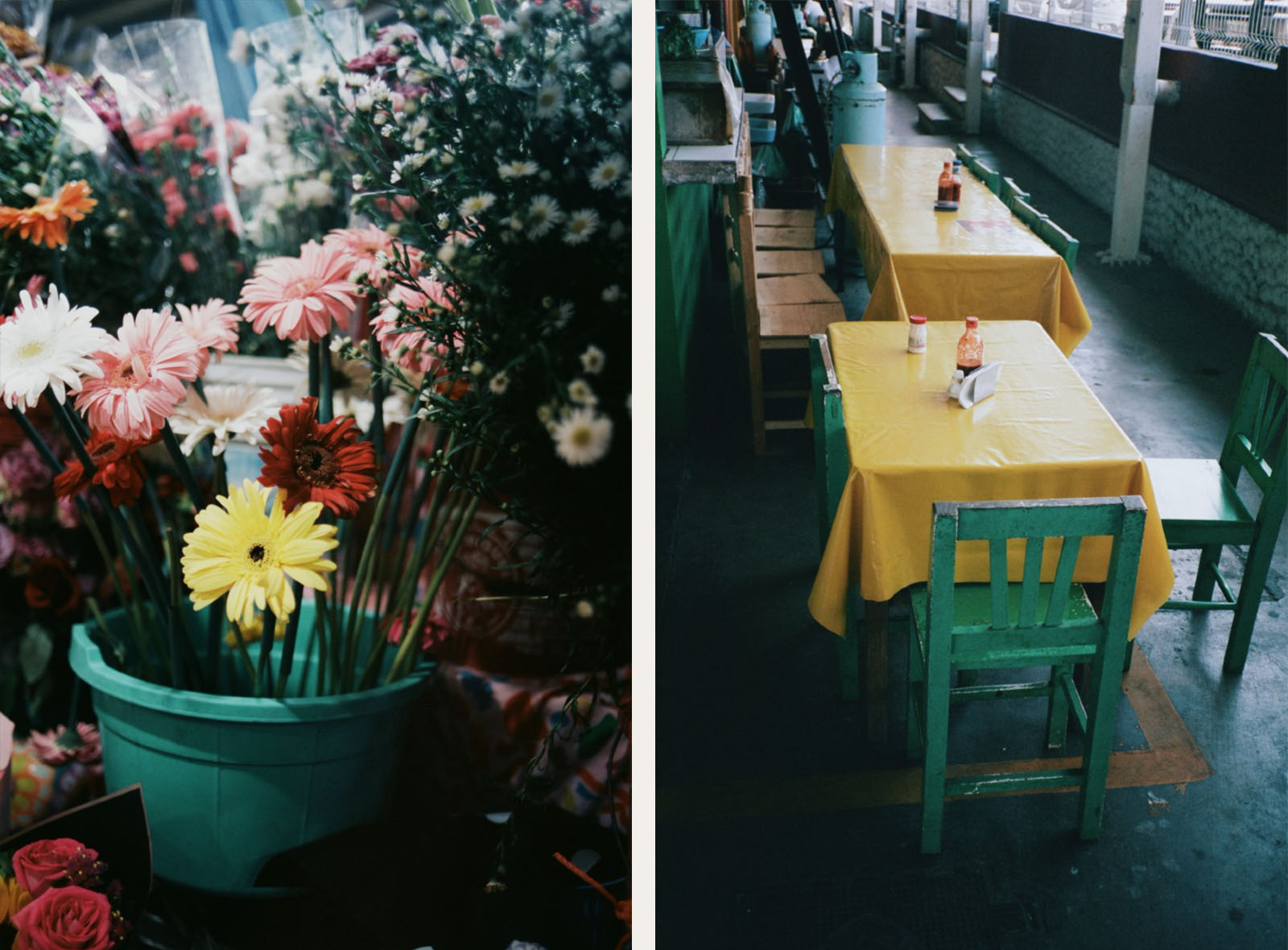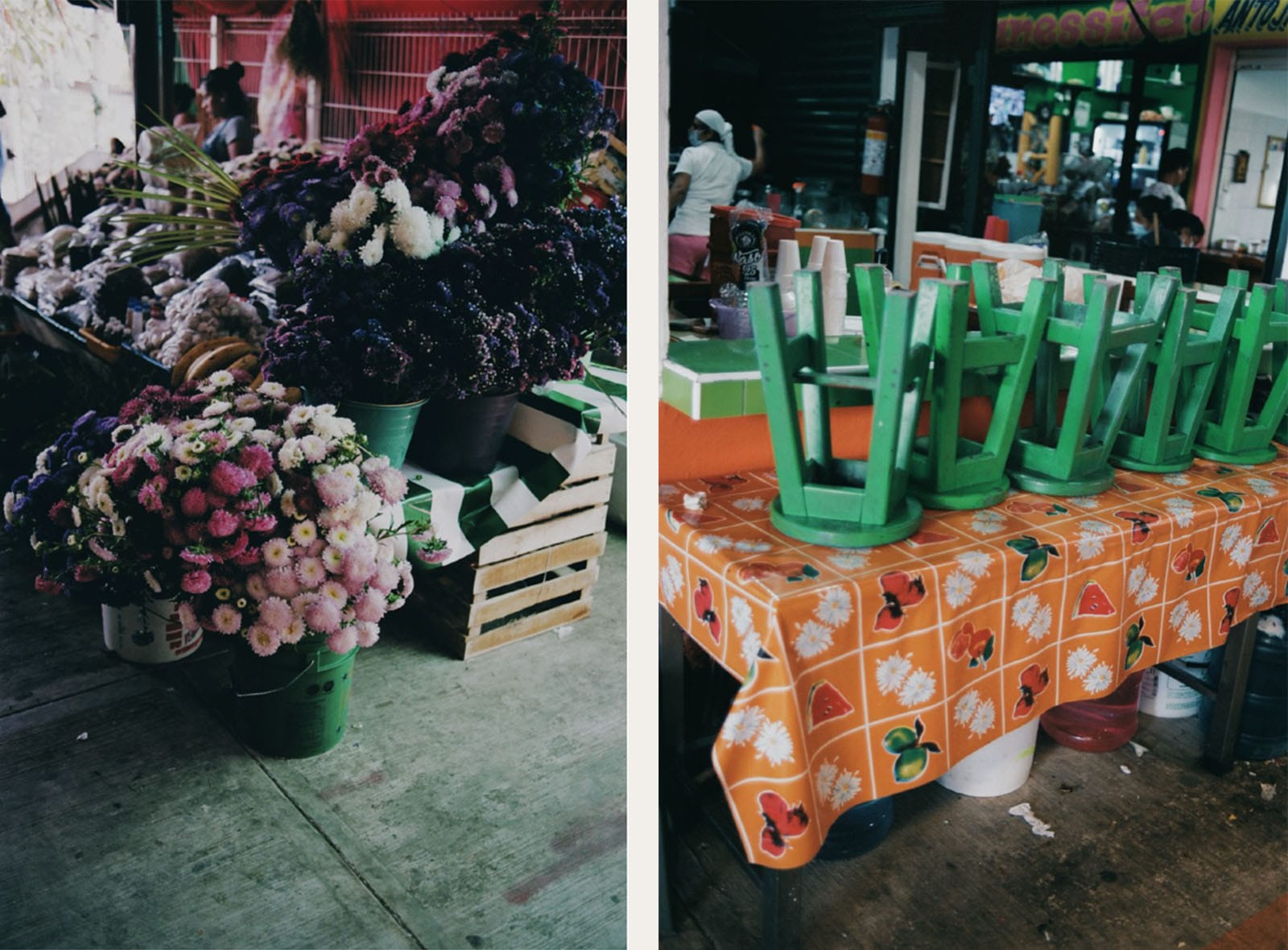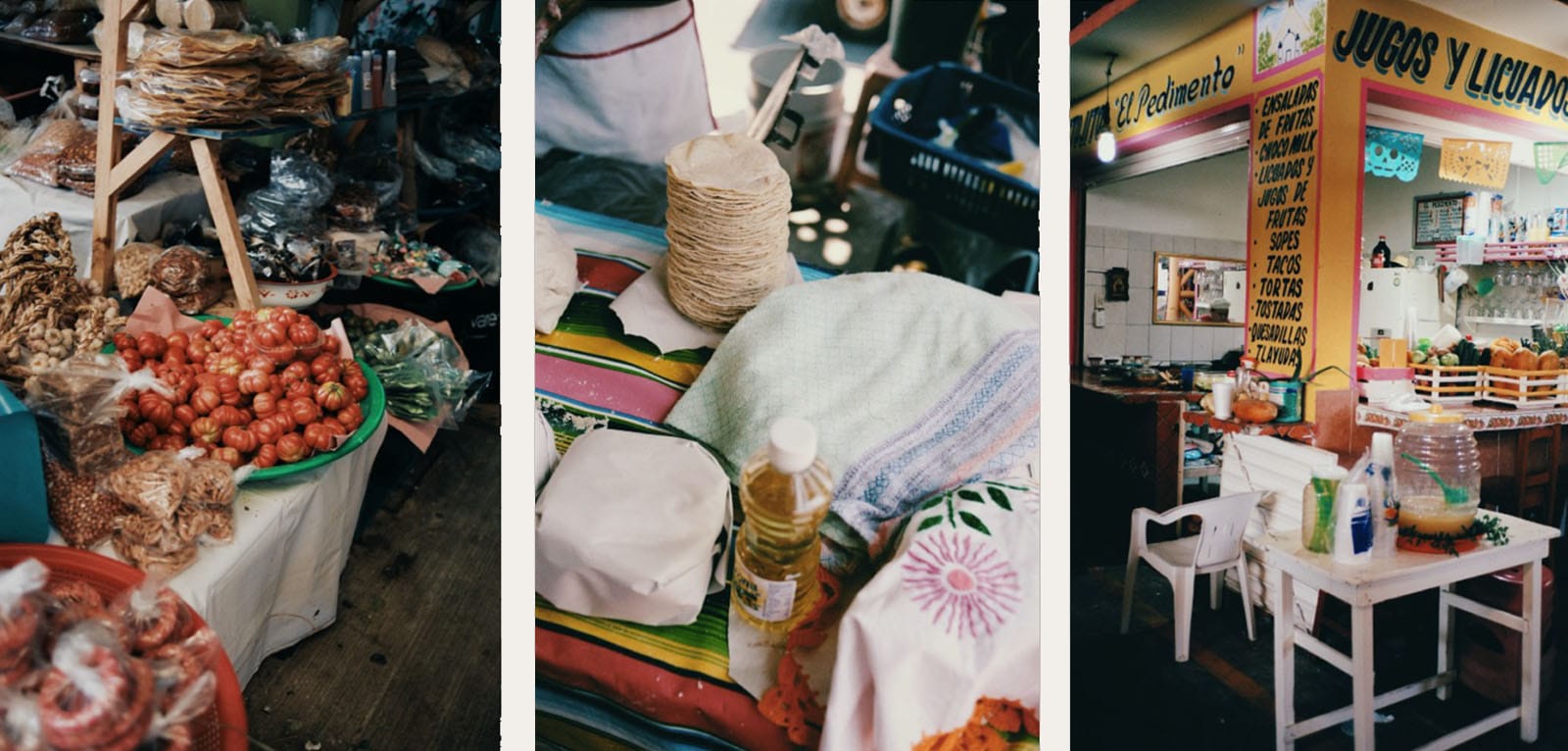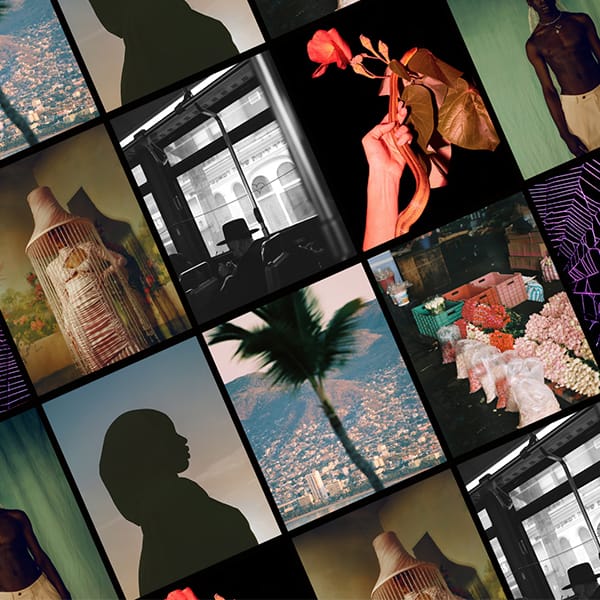Pia Riverola is a Barcelona-born photographer based in Los Angeles and Mexico City in between jobs that take her all over the world. Riverola is difficult to neatly categorize as a photographer. Her work encompasses travel, fashion, architecture, and documentary photography, without being fixed to any one of those genres. At the same time, her work is instantly recognizable for a certain look, one defined by a soft, romantic color palette that invites the viewer into the frame and the moment. In conversation about her work, she refers to seeking out a certain kind of “magic” in everyday moments.
For the fourth and final installment of Witness, our original editorial series in partnership with Leica Camera, Riverola revisits a recurring vein of work that she’s been going back to off and on for many years: flower markets. NeueJournal sat down with Riverola to learn more about her distinctive color palette, her attraction to flower markets, and what it was like photographing with a Leica for the first time.
“I feel that color is very important, but light is even more important. So I think it’s more about being very attracted to the light of a certain hour of the day, which would be morning or late afternoon, and then the color tone.”
NEUEJOURNAL: Where were the images for this project shot?
PIA RIVEROLA: These images were shot in Oaxaca, Mexico, at the Puerto Escondido flower market. I was in Oaxaca and I had a couple days off so I went around wandering. I love flower markets—just taking photos of the market, the food, the vendors, the flowers.
NEUEJOURNAL: What is the attraction to flower markets?
PIA RIVEROLA: When you go to a flower market, the possibilities are endless. It’s very possible I will take a photo that I haven’t taken before because there’s a lot of movement and a lot of different things happening and different people, even different flowers. Like, Mondays there’s one flower. Tuesdays there’s another flower. It all depends on what the farmers bring that day. You go on Mother’s Day and it’s incredible. You go on the Day of the Dead and it’s all orange and red. It changes all the time. I could go every day. I also love the lighting of markets because it’s a mix of natural light with artificial, so it’s a weird feeling of being inside and outside, and it creates a very interesting atmosphere and look for photography.

NEUEJOURNAL: When you’re at a market, do you try to be invisible or do people tend to notice you?
PIA RIVEROLA: They definitely notice me, especially when I’m carrying a baby and I’m with my six-foot-tall husband. But I’m very fast. You need to be fast and you need to not bother the subject you’re photographing. I want to capture the scene as it is, so I don’t want them to notice me and stop doing what they’re doing. That breaks the magic.
NEUEJOURNAL: What are the types of moments you’re trying to capture?
PIA RIVEROLA: I try to capture reality as it is—everything as natural as possible—just real life happening in the moment. Sometimes it’s very simple—someone buying a flower, exchanging money, or a movement—very simple actions that, for me, are very beautiful. And when you see them from the outside, in context of movement and the place itself, it creates an element of magic.
NEUEJOURNAL: How do you describe yourself as a photographer? Do you see yourself as a street photographer, a travel photographer, or something else?
PIA RIVEROLA: It’s difficult for me to define myself as a specific kind of photographer because, for me, the magic of my work is that I can move from subject to subject and place to place. I love taking photos of architecture. I love taking photos of people in the street. But I do fashion and portraits, too. I love the connection with a person when you’re taking photos and trying to know them in that very short period of time. With architecture, I love that I shoot by myself, and it’s silent, and I don’t have to engage with anyone besides the space. And then I do a lot of travel. So I love to be able to do all these different things, and I don’t get tired of taking photos because I’m able to explore all these different subjects.

“I feel like I travel to take photos and I take photos to travel.”
NEUEJOURNAL: Your work has a very distinctive color palette. How did that develop?
PIA RIVEROLA: I feel that color is very important, but light is even more important. So I think it’s more about being very attracted to the light of a certain hour of the day, which would be morning or late afternoon, and then the color tone. The tone changes depending on the light, so I think those soft colors or soft tones are because the light is very soft in the times that I shoot.
NEUEJOURNAL: You have connections in your work to Spain, Los Angeles, and Mexico. What do these places have in common for you?
PIA RIVEROLA: Mexico and L.A. have a very similar light. Barcelona is different. Los Angeles has very similar light to certain parts of Mexico, for example. The afternoon has the same tone. Los Angeles has the best afternoon light I’ve ever seen. Every afternoon is a sunset, I don’t know how. In Barcelona, we don’t have that. There’s maybe one pink afternoon sunset in a month. Here, it’s every afternoon.
NEUEJOURNAL: What role does travel play in your work?
PIA RIVEROLA: I started taking photos while I was traveling, and I love to travel. When I was a little kid I used to say that I wanted to be a flight attendant because they get to travel so much. I just started traveling when I was very young with very little money, and then I started taking photos. I feel like I travel to take photos and I take photos to travel. It’s so special to wake up in a new place—it’s just really charming.
NEUEJOURNAL: How much of what you do gets shaped in the editing process?
PIA RIVEROLA: I don’t shoot too much. I don’t overdo it. It’s like, when you see something happening, you think, “OK, is this what I want to capture? Yes,” so you capture it. I don’t normally take a lot of photos that I end up not using. It’s more about waiting for the right moment. At the same time these moments are happening fast, so if I turn around and that moment has already happened, I’m not going to photograph it. I’m going to wait for something else.
I know what I’m looking for because I’m putting myself in a certain location, so I know that certain things are going to happen. I look a lot. I feel like I’m always looking everywhere, at whatever people are doing—movements, gestures, interactions between people. So I just look for that: real moments that happen spontaneously.

NEUEJOURNAL: What would you say is the experience you want to create for the viewer?
PIA RIVEROLA: People always say I take photos of the most random, normal, quotidian things, but it has a certain magic. And I think, “No, people don’t look enough and don’t pay attention to these things that happen that are beautiful.” That’s what I want to show them. Just that there’s magic in these very normal, day-to-day scenarios that happen in everyday life.
NEUEJOURNAL: This series was photographed with an analog rangefinder Leica. Was this your first experience taking photos with a Leica camera?
PIA RIVEROLA: I had never photographed with a Leica before this series and I was looking forward to it. I think the Leica M-A is an amazing camera and I admire different photographers who use them, so I was very intrigued and very excited.

NEUEJOURNAL: What did you notice in terms of the difference with the Leica?
PIA RIVEROLA: Every camera is different. Using any tool is different and I love experiencing that because it’s a learning experience. I was using the Leica M-A film camera with a 35mm Leica M lens. With the Leica, you have to stop and look at what you want to shoot and then take a photo, and it requires a little bit of time. Which is beautiful because, again, it allows me to capture those very magic moments with time to think about what I want to capture, instead of taking photos really fast. You need to invest a little more time, which is really good. It’s definitely a master’s tool. When you learn how to use it, it’s amazing.
NEUEJOURNAL: How does the equipment you’re using, in this case the Leica M-A film camera, shape your process?
PIA RIVEROLA: I feel like photography is something that you learn while you’re doing it. And there’s a connection between you and the camera, you have to pay attention to what you’re doing. It’s not like shooting with a phone. You need to be here, present, and I think that’s very interesting, because it makes you focus on one thing and be present in that moment.
Share This Page




